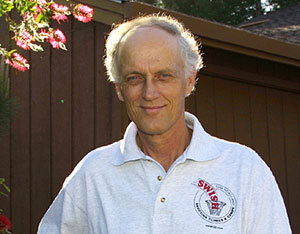
Below you’ll find excerpts from an article by basketball shooting coach, Tom Norland, as he challenges common misconceptions about developing effective shooters.
Norland challenges conventional wisdom on “squaring up,” elbow placement under the ball, shooting at the top of the jump and wrist action on an athlete’s shot.
I’ve enjoyed Norland’s work having purchased is shooting DVDs and took away some golden nuggets that I often use when coaching shooting.
Hope this gets you thinking too…
[ Note: I originally shared a direct link to an article called ‘Changing Shooting Technique Not Time Consuming’ posted on CoachesClipboard.ca. It has since been taken down so I have pulled some excerpts from a similar article posted on Swish22.com. ]
Fixing What’s Wrong With Shooting
You don’t have to watch too many high school, college or pro games to realize that shooting percentages are steadily plummeting from year to year.
Missing easy jump shots is so common that it’s not considered out of the ordinary anymore. Teams often shoot only 30 to 40 percent from the field for a game and that includes layups and dunks! Seventy-percent shooting from the free-throw line is now considered quite good.
The problems with shooting stem from [some] basic issues. After understanding those issues, players need to learn better shooting technique and coaches need to realize there are [some] critical mistakes they are making when it comes to coaching the skill.
Changing Technique Not Time Consuming
Most people will look at those seven basic shooting problems and think that none of them can be solved overnight. While overnight may be a stretch, shooting well is not that difficult and can be learned in a fraction of the time many players and coaches might believe.
The truth about most physical actions, in my opinion, is that we greatly over complicate them. The basketball shot has evolved for most players into a throwing motion coming mostly from the upper body. Arms, wrists, hands and fingers are employed to power and guide the shot, thus creating a flat arch (30 degrees above horizontal at best) and a ball flight controlled by small muscles.
Watch your players shoot. Most shots get only 1-2 feet above the basket at the highest point. The shots are coming in “hot” and flat, around 20-30 degrees above horizontal. How often do you see one that rises higher than the top of the backboard? If you do, it’s probably coming from the best shooter on the court. Shooting high does two major things:
- Creates a larger landing area for the ball
- Softens the shot, as gravity has more time to slow it down as it rises.
From my research, a shot coming into the basket at a medium high angle of about 45 degrees above horizontal has an effective landing area about 60% larger than for a shot coming in at 30 degrees. A 60-degree angle shot (the angle considered most effective by coaches) has a landing area more than twice as large as a 30-degree angle shot.
Getting Players To Shoot Higher
Most players can’t shoot very high with the muscle action they use. Arm, wrist, hand and finger actions are horizontal motions. They create a flat arch. To get higher arch, the players must use more body and leg action.
Better shooters use their legs and entire bodies to shoot. They don’t just jump to get elevated or to initiate the shot – they are shooting FROM this energy. This gives them more arch automatically.
The more your players shoot from this power (I call it “UpForce“) the higher, quicker and more stabilized the shot will be. Also, note that the more the shot comes from the lower body, the more the upper body can relax, quiet down and become constant and predictable. Shooting starts to become effortless.
#thankthepasser: Visit Coach Borland’s website, Swish22, to learn more about some common misunderstandings with ‘squaring up’ and having the elbow under the ball and shooting at the top of the jump.